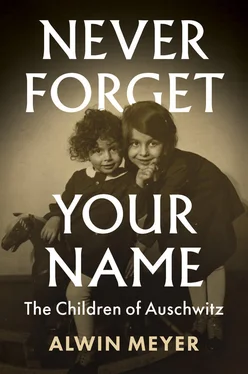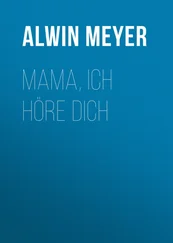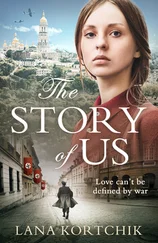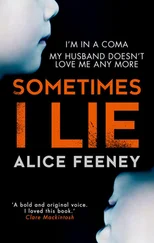45 45 Gutman, Holocaust, vol. II, pp. 549–50.
46 46 Jaroslav Macek, ‘Geschichte der Grenzgebiete 1938–1945’, in Brandes and Kural,eds., Der Weg in die Katastrophe, pp. 57–75.
47 47 Christian Gerlach and Götz Aly, Das letzte Kapitel – Der Mord an den ungarischen Juden 1944–45 (Frankfurt am Main 2004), pp. 19–90.
48 48 Gutman, Holocaust, vol. I, p. 127.
49 49 Envelope stamped 14 March 1939, original owned by the author.
50 50 Spector, ed., Jewish Life, vol. II, pp. 949–50.
51 51 Nippa and Herbstreuth, Eine kleine Geschichte der Synagoge, pp. 278–82; see also Gutman, Holocaust, vol. III, pp. 1062–5.
52 52 Jaroslava Milotová, ‘Zur Geschichte der Verordnung Konstantin von Neuraths über das jüdische Vermögen’, in Theresienstädter Studien und Dokumente 2002 (Prague 2002), pp. 75–115.
53 53 Wolf Gruner, ‘Protektorat Böhmen und Mähren’, in Wolf Gruner and Jörg Osterloh, eds., Das ‘Großdeutsche Reich’ und die Juden – Nationalsozialistische Verfolgung in den ‘angegliederten’ Gebieten (Frankfurt am Main and New York 2010), p. 159.
54 54 Ladislav Lipscher, Die Juden im Slowakischen Staat (Munich and Vienna 1980), pp. 31–6.
55 55 Spector, ed., Jewish Life, vol. I, p. 184; Grünhut, Pressburg, pp. 159−201.
56 56 Lipscher, Die Juden, pp. 63−77.
57 57 Ibid., pp. 80–4; Miloslav Szabó, ‘Slowakische Rassegesetze (1939–1941)’, in Wolfgang Benz, ed., Handbuch des Antisemitismus – Judenfeindschaft in Geschichte und Gegenwart, vol. IV (Berlin and Boston 2011), p. 388.
58 58 Quoted from Büchler, Topoltschany, pp. 126−9.
59 59 Lipscher, Die Juden, p. 64.
60 60 Büchler, Topoltschany, pp. 126−9.
61 61 Gerlach and Aly, Das letzte Kapitel, pp. 48−50.
62 62 Hirsch, Als 14-jähriger durch Auschwitz-Birkenau, p. 26, and the document translated into German, from the Arrow Cross party on 7 August 1941, on the CD provided with the book.
63 63 Gerlach and Aly, Das letzte Kapitel, pp. 48−50.
64 64 Drahomír Jančík, ‘Germanisierung und Ausbeutung der tschechischen Wirtschaft und des jüdischen Vermögens zur Zeit der Okkupation’, in Beneš and Kural, eds., Geschichte verstehen, pp. 126–7.
65 65 Schoeps, ed., Lexikon des Judentums, p. 670.
66 66 ‘Bericht der Zentralstelle für jüdische Auswanderung in Prag über die Entwicklung und die Lage der Juden im Protektorat Böhmen und Mähren vom 15. März 1939 bis zum 1. Oktober 1941’, in Theresienstädter Studien und Dokumente 1996 (Prague 1996), pp. 265–6.
67 67 Ibid.
68 68 Lucie Ondrichová, Fredy Hirsch – Von Aachen über Düsseldorf und Frankfurt am Main durch Theresienstadt nach Auschwitz-Birkenau (Konstanz 2000), p. 29.
69 69 Jaroslava Miltova, ‘Der Okkupationsapparat und die Vorbereitung der Transporte nach Łódź’, in Theresienstädter Studien und Dokumente 1998 (Prague 1998), pp. 40–69; Gottwaldt and Schulle, ‘Judendeportationen’, pp. 66–9, 73, 78, 81, 83.
70 70 See also Martina Schweibergová, ‘Hagibor: ein Ort mit lehrreicher Geschichte’: https://deutsch.radio.cz/hagibor-ein-ort-mit-lehrreicher-geschichte-8562028.
71 71 Ondrichová, Fredy Hirsch, pp. 9−35.
72 72 Schweibergová, ‘Hagibor’.
73 73 Franz Werfel, Poems, trans. Edith Abercrombie Snow (New Jersey 1945), p. 113.
74 74 Jančík, ‘Germanisierung und Ausbeutung’, pp. 124–37.
75 75 Bernhard Brunner, Der Frankreich-Komplex – Die nationalsozialistischen Verbrechen in Frankreich und die Justiz in der Bundesrepublik Deutschland (Frankfurt am Main 2007), pp. 31–44.
‘The Hunt for Jews Began’
Robert Büchler In summer 1940, the Slovak government began to compel the Jews, who had been excluded from the country’s social life and economy, to carry out forced labour. In autumn 1941, the conversion of the former military barracks in Sered’ and Nováky began. There, and in the existing camp at Vyhne, the Jewish population was to be isolated and concentrated. The authorities saw this as a stage on the way to the final ‘solution of the Jewish question’ in Slovakia. 1
One of these camps, Nováky, was around 40 kilometres from Topol’čany, where Robert Büchler and his family lived. Many Jewish men aged between 16 and 60 were moved there from the town and forced to work.
In 1942, the rumours regarding the permanent expulsion of the Jews from Slovakia began to increase. The pro-Nazi president of Slovakia, the Catholic cleric Jozef Tiso, denied these plans. But just a few days later, on 27, 28 and 31 March, the first transports with young Jews left Topol’čany via Slovak transit camps to the East. 2‘This came like a bolt from the blue.’ The Jews were taken completely by surprise. They couldn’t believe what was happening. ‘The community was in shock. And before we knew it, hundreds of railway wagons had been loaded up.’
The government authorities attempted to calm things with lies, saying that the expulsions would stop. The Germans were only interested in young persons capable of working. By the beginning of April, this had already been revealed to be a subterfuge. ‘The next hunt for Jews in Topol’čany began.’ This time whole families were taken. ‘One train after the other stood in the station, and many brothers and sisters set off on the road to no return.’
By August, the Jewish population of Topol’čany had been literally decimated. Nine of Josef Büchler’s siblings had been deported with their families. Only 618 Jews of ‘importance for the economy’ remained. And they looked to the future with anxiety. 3
Channa Markowicz In March 1939, Hungary had re-annexed Carpatho-Ukraine from Czechoslovakia, 4including Irshava, Channa Markowicz’s hometown. The first anti-Jewish laws were soon to follow.
The eyes of the occupiers were drawn particularly to Jews who, despite having lived in many cases for two or three generations in the Carpathian region – the mountainous area originally belonging to Czechoslovakia, now in Ukraine – had not become citizens or could not prove their citizenship. Jews who could not prove that their ancestors had lived there permanently before 1867 were especially endangered. 5This also applied to relatives of the Markowicz family who had immigrated from Poland.
By the end of August 1941, around 18,000 ‘foreign’ Jews, as they were called, had been deported by the Hungarian gendarmerie via eastern Galicia to Kamenez-Podolsk [Kam’yanets’ Podil’s’kyi] in Ukraine. Most of them were from the part of the Carpathians annexed by Hungary from Czechoslovakia in 1939. In Kamenez-Podolsk, 14,000 to 16,000 Jews deported from Hungary were murdered on 27 and 28 August 1941, together with several thousand Jews from the surrounding area. Apart from the SS and men from Police Battalion 320, members of the Ukrainian self-defence and a Hungarian pioneer unit took part. Altogether, 23,000 Jewish children, women and men perished on those two August days in 1941. 6‘The first of our relatives were deported in 1942. At the time we thought it couldn’t get worse than it already was.’ They were wrong.
Eduard Kornfeld One day in Bratislava, came the order ‘All juveniles or all girls, I can’t remember which, have to register.’ The family didn’t know what to do. Was it going to get worse? Everyone was very afraid. There were rumours of deportation. No one knew where to. On 26 March 1942, the first transport with young Jewish women and girls from Slovakia reached Auschwitz extermination camp. Auschwitz Chronicle records: ‘999 Jewish women from Poprad in Slovakia are sent to the women’s section of Auschwitz. This is the first registered transport … The Jewish women get uniforms that belonged to the murdered Russian POWs.’ 7
Читать дальше












